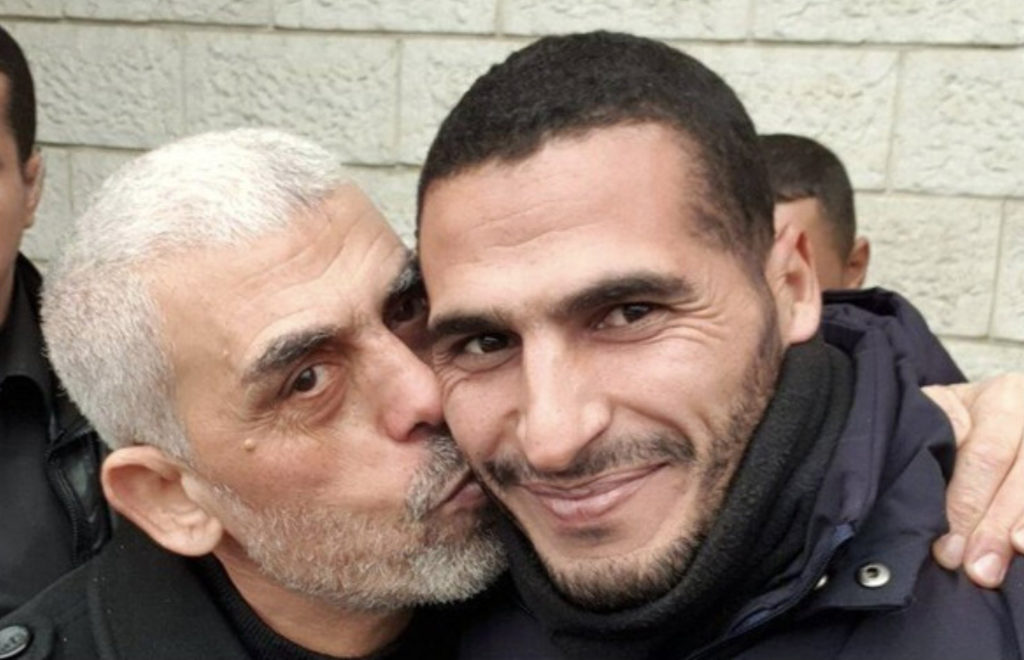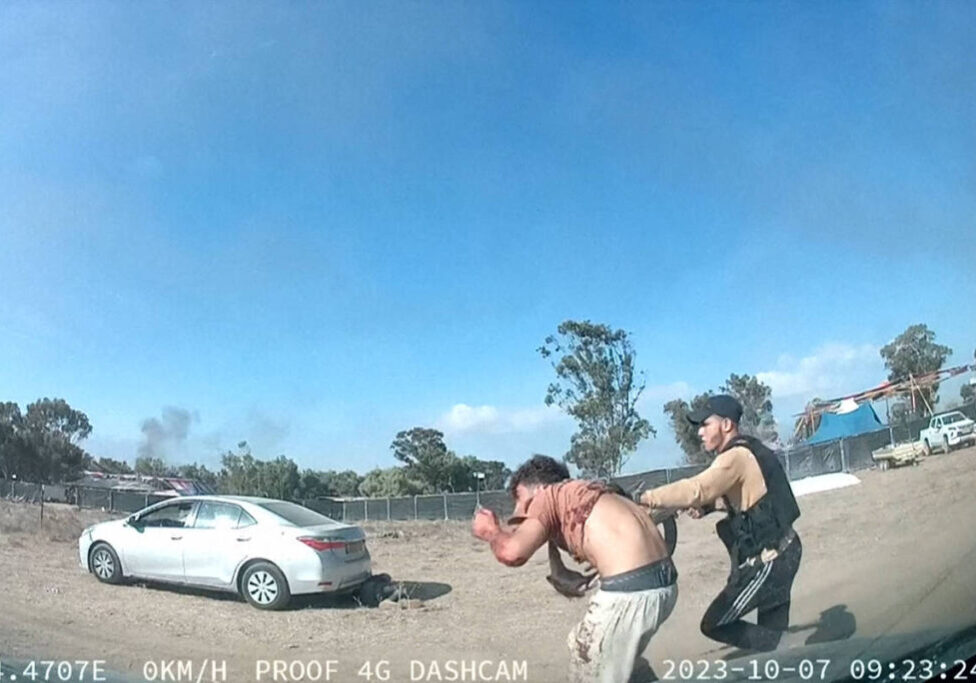Australia/Israel Review
Journalists without boundaries
Nov 24, 2023 | Eytan Gilboa, Lilac Sigan

Those who watched live TV reports on the gruesome atrocities Hamas committed on October 7 in southwestern Israel may have witnessed a Gazan “journalist” speaking to a camera while documenting and explaining the atrocities inside kibbutzim, villages, and towns. One had to wonder who he was and what he was doing there, but the horrifying scale of the massacre left these questions unnoticed.
It turns out that Gazan photographers accompanied the invading Hamas terrorists almost from the beginning of the attack, disseminating real-time videos and images to news agencies like AP and Reuters and media outlets like the New York Times and CNN.
An investigation by Honest Reporting, a media watchdog that monitors reporting on Israel in Western media, raised serious ethical and professional questions about the conduct of these photographers. Did they know in advance about Hamas’s intention to conduct a massacre? If not, how did they arrive there with Hamas terrorists? Did they report to their editors about crossing the border and entering civilian communities? Did the editors authorise them to accompany and film the acts of murder, lynching, and kidnapping? After receiving the images, did the media outlets make sure to reveal that they were obtained from Gazan photographers accompanying Hamas terrorists?
The investigation is important because it reveals the truth about Gazan “journalists” who serve as de facto spokespeople for Hamas, and because this “journalistic” material is routinely marketed to leading media channels worldwide, which then publish it under a normal credit or byline. Western audiences have no way of knowing that this material is produced under strict Hamas censorship.
The relevant outlets must immediately conduct an in-depth investigation of the activity of the photographers whose images they use, and announce their findings, as the Israeli National Information Branch and the Israeli Association of Journalists in Jerusalem have demanded.
During the war in Gaza, there were other puzzling blunders. The most flagrant was the immediate adoption of Hamas’ false report on Oct. 17, about “an Israeli air strike on Al-Ahli Hospital in Gaza killing 500 civilians.” It was an explosion caused by a failed rocket launched by the Palestinian Islamic Jihad that fell in the hospital’s parking lot and caused a much lower number of casualties. The NYT was the first in the row of dominoes that echoed Hamas lies around the world, leading to riots in Arab countries and cancelling a summit in Jordan with President Biden. Where were the newspaper editors who believed the spokespersons of a terrorist organisation with a long history of lies and misleading the media?
On April 16, 2017, the NYT published an opinion piece by Marwan Barghouti while omitting the fact that he was sentenced to five consecutive life sentences plus 40 years in prison for acts of terror, in which many Israelis were murdered and wounded. The NYT admitted the important omission and published a clarification.
On April 25, 2019, the same newspaper published an antisemitic cartoon depicting Donald Trump as a blind man led by a dog with Netanyahu’s face. A Star of David appeared on the dog’s collar. The NYT dismissed the cartoonist and apologised, only after strong protests from many Jewish organisations and a demonstration against the NYT outside the newspaper’s building.
On Nov. 16, 2021, Patrick Kingsley published a long and laudatory article about a professor in Gaza, Refaat Alareer, who teaches his students works by Israeli poets and presented him as a cultural moderate bridge-builder. On his social media accounts, however, the “peace-seeking” professor regularly posted extremist filth about Israel, Zionists, and Jews that would not embarrass an SS Nazi officer. Kingsley was negligent in publishing a misleading story, and the NYT had to publish an “editor’s note” to correct the significant error.
On Nov. 27, 2022, the NYT published a lengthy story by Raja Abdulrahim in which she claimed that the siege on Gaza destroyed its fishing industry. After the story was published, official Palestinian data showed that the truth was exactly the opposite; the fishing industry in Gaza had in fact doubled in recent years, not decreased. Again, the NYT published an editor’s note to correct the false claim, but the story still appears in the NYT archives, making more or less the same claim. In addition, the NYT employed two Gaza-based “freelancers”, Fadi Hanona and Soliman Hijjy, who in their social media accounts turned out to be Hitler enthusiasts. Both were fired, but the NYT recently rehired Hijjy and he contributed no less than 13 articles about the fighting in Gaza. Can any reasonable reader believe his reports?
Media outlets are not inclined to admit their embarrassing errors and only acknowledge them after being exposed, as happened with the cases described above. The correction the NYT published of the false report about the explosion at the Gaza hospital came only after the White House had rebuked it. It is likely the paper publishes errors and false news that no one exposes.
The tendency to focus on one failed case and describe it as an exception is misleading. As demonstrated above, these are much broader professional and ethical failures. There are two main reasons for these failures: The first is the employment of Palestinian “journalists” or stringers in Gaza who are Hamas supporters or forced to report according to Hamas guidelines. The Hamas regime in Gaza is autocratic, there is no freedom of press or of expression. The editors do not properly examine reports from Gaza and refrain from proper disclosure of the conditions under which the reports are made.
The second reason is the political and ideological attitudes of many reporters, especially the younger ones. They see the world through the conception of oppressor-oppressed, that leads them to interpret any event against Israel and in favour of the Palestinians, even when it involves the vicious terrorist organisations that lead them.
The question is what will happen next, after the depth of the Western media failure starts to be exposed. An in-depth study needs to examine the professional and ethical failures described here, both in the period preceding the massacre, and during and after it. AP and CNN rushed to comment that they did not know of the massacre in advance, CNN said it will no longer employ Hasan Eslaiah, one of the photographers.
But the questions run much deeper than terminating relations with spokespersons for Hamas masquerading as journalists. How did the editors communicate the fact that they received information from Hamas assistants who penetrated the heart of Israel’s kibbutzim, villages, and towns? Are the audiences exposed to video clips, images, and information from Gaza aware that they all actually come from Hamas, its spokespersons, and assistants?
Recently, the NYT published an extensive investigation into Hamas’ planning ahead of the October 7 massacre. Why has it never conducted a thorough investigation into Hamas’ Nazi-fascist ideology, its harsh despotic control over Gaza residents and its genocidal attitude toward Israel? Why has it consistently referred to Hamas members as “militants,” a loose term, and not “terrorists” as they really are, and as Hamas is defined by the US government and many other countries?
Events have been unfolding extremely fast, they are dynamic and multiplying at a dizzying pace. We are frequently exposed to more jaw-dropping details about reputable Western institutions of information and knowledge becoming captive to Hamas’ industry of lies and fabrication. Anyone who believes in freedom of the press and Western democratic values must continue to expose these failures because as they surface, it becomes inevitable to acknowledge them and effectively cope with them.
Prof. Eytan Gilboa is the founding Head of the School of Communication at Bar-Ilan University, and Lilac Sigan is an author, journalist, and researcher at the school. © Times of Israel (www.timesofisrael.com), reprinted by permission, all rights reserved.
Tags: Hamas, Media/ Academia






